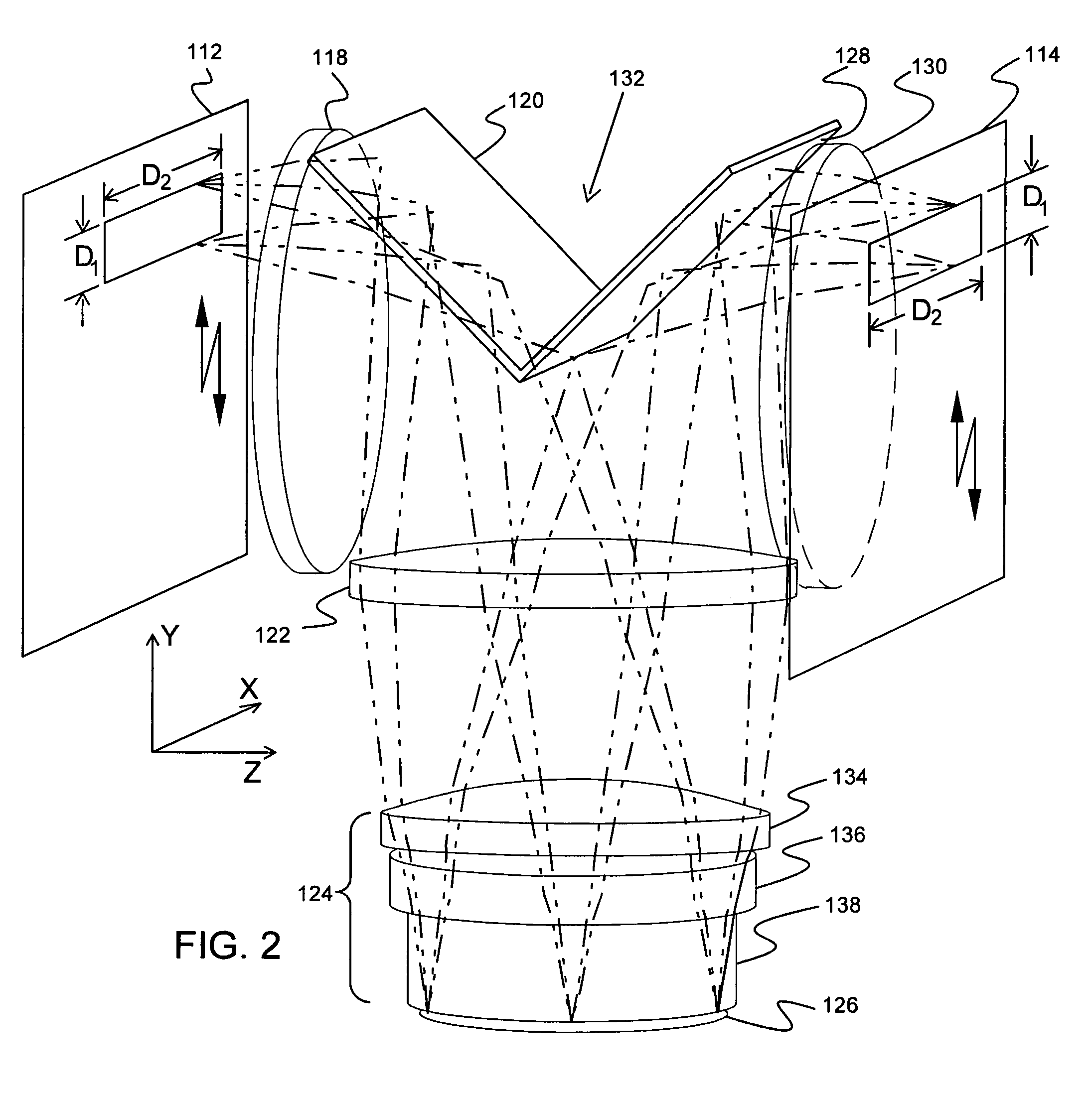Catadioptric 1x projection system and method
a catadioptric and projection system technology, applied in the field of catadioptric projection system and method, can solve the problems of severe obscuration problems, low numerical apertures of prior systems, and relatively high residual aberrations
- Summary
- Abstract
- Description
- Claims
- Application Information
AI Technical Summary
Benefits of technology
Problems solved by technology
Method used
Image
Examples
Embodiment Construction
[0017]FIG. 1 illustrates one preferred embodiment of a catadioptric 1× projection system 100, according to the principles of the present invention. The system includes an illumination source 102, which according to the one embodiment emits light at the spectral bandwidth of the Mercury I line (365 nm). The light is collimated by a condenser lens 104, and directed through a rectangular aperture 106 in a diaphragm 108. A relay lens 110 projects an image of the rectangular diaphragm aperture 106 onto a mask 112, which forms an object plane of the system. The illumination optical system 104-110 may comprise an optical integrator for providing a uniform illumination distribution on the object plane and / or an image plane. The optical integrator can be a Fly's eye lenses and / or a Rod integrator. The rectangular diaphragm aperture of the diaphragm 108 can be modified to provide a trapezoidal diaphragm aperture, a hexagonal diaphragm aperture, or other polygonal diaphragm aperture. The proje...
PUM
 Login to View More
Login to View More Abstract
Description
Claims
Application Information
 Login to View More
Login to View More - R&D
- Intellectual Property
- Life Sciences
- Materials
- Tech Scout
- Unparalleled Data Quality
- Higher Quality Content
- 60% Fewer Hallucinations
Browse by: Latest US Patents, China's latest patents, Technical Efficacy Thesaurus, Application Domain, Technology Topic, Popular Technical Reports.
© 2025 PatSnap. All rights reserved.Legal|Privacy policy|Modern Slavery Act Transparency Statement|Sitemap|About US| Contact US: help@patsnap.com



